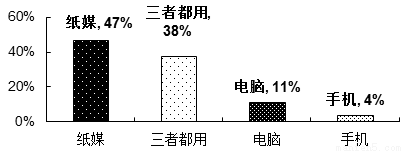题目内容
Cell Phones: Hang Up or Keep Talking
Millions of people are using cell phones today. In many places, it is actually considered unusual not to use one.1. They find that the phones are more than a means of communication – having mobile phone shows that they are cool and connected.
The explosions around the world in mobile phone use make some health professionals worried. Some doctors are concerned that in the future many people may suffer health problems from the use of mobile phones. Mobile phone companies are worried about the negative publicity(负面报道)of such ideas. 2.
On the other hand, signs of change in the issues of the brain and head can be detected with modern scanning equipment. In one case, a traveling salesman had to retire at a young age because of serious memory loss. 3. This man used to talk on his mobile phone for about six hours a day, every day of his working week, for a couple of years.
4. The answer is radiation(辐射). High-tech machines can detect very small amounts of radiation from mobile phones. Mobile phone companies agree that there is some radiation, but they say the amount is too small to worry about.
As the discussion about the safety continues, it appears that it’s best to use mobile phones less often.
5. Use your mobile phone only when you really need it. In the future, mobile phones may have a warning label that says they are bad for your health. So for now, it’s wise not to use your mobile phone too often.
A. They say that there is no proof that mobile phones are bad for your health.
B. What do the doctors worry about?
C. In many countries, cell phones are very popular with young people.
D. Use your regular phone if you want to talk for a long time.
E. He couldn’t remember even simple tasks.
F. They will possibly affect their benefits.
G. What is it that makes mobile phones potentially harmful?



 t Griffith Observatory according to the passage?
t Griffith Observatory according to the passage?